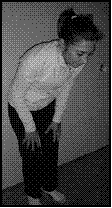Clinical Prediction Rule for Lumbar Stabilization
Reference:Hicks GE, Fritz JM, Delitto A, McGill SM. Preliminary development of a clinical prediction rule for determining which patients with low back pain will respond to a stabilization exercise program. Arch Phys Med Rehabil. 2005 Sep;86(9):1753-62.
There are many clinical opinions out there, in the one extreme, there are those who believe EVERY individual with back pain requires some form of a lumbar stabilization exercise program, and there are others who believe that lumbar stabilization exercises are of no benefit.
Is it possible that both these extreme opinions are inaccurate? Could it be possible that SOME patients with LBP benefit from stabilization exercises and SOME do not? The million-dollar question is… how can clinicians know beforehand which patients are most likely to benefit from a stabilization exercise program?
Well, this study effectively demonstrated a clinical prediction rule to answer just that question!!
The greatest predictors for dramatic success with an 8-week stabilization program (attending PT 2X/week) were:
1) Age less than 40
2) Positive prone instability test
3) Presence of aberrant movement during forward bending (e.g. thigh climbing, a painful arc, ‘catching’ pain, lumbo-pelvic rhythm reversal)
4) Average passive SLR greater than 90 degrees
5) Hypermobility during lumbar mobility assessment (i.e. a PA mob)
6) High score on the Fear Avoidance Beliefs Questionnaire (FABQ)
Posted on: December 15, 2011
Categories: Lumbar Spine


